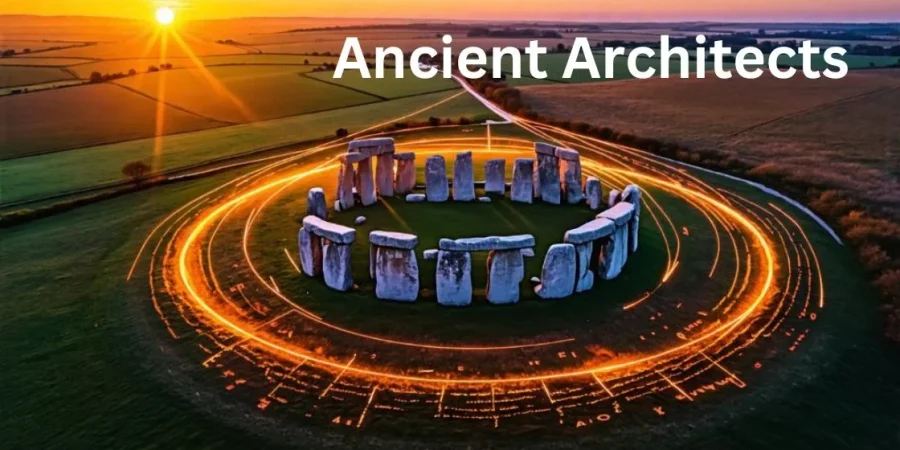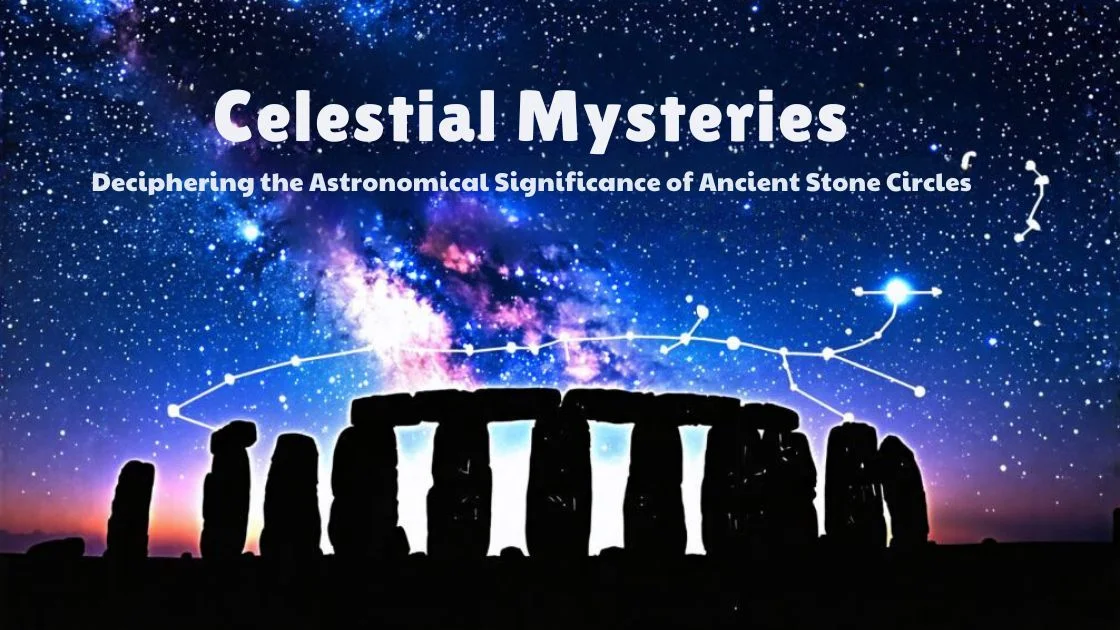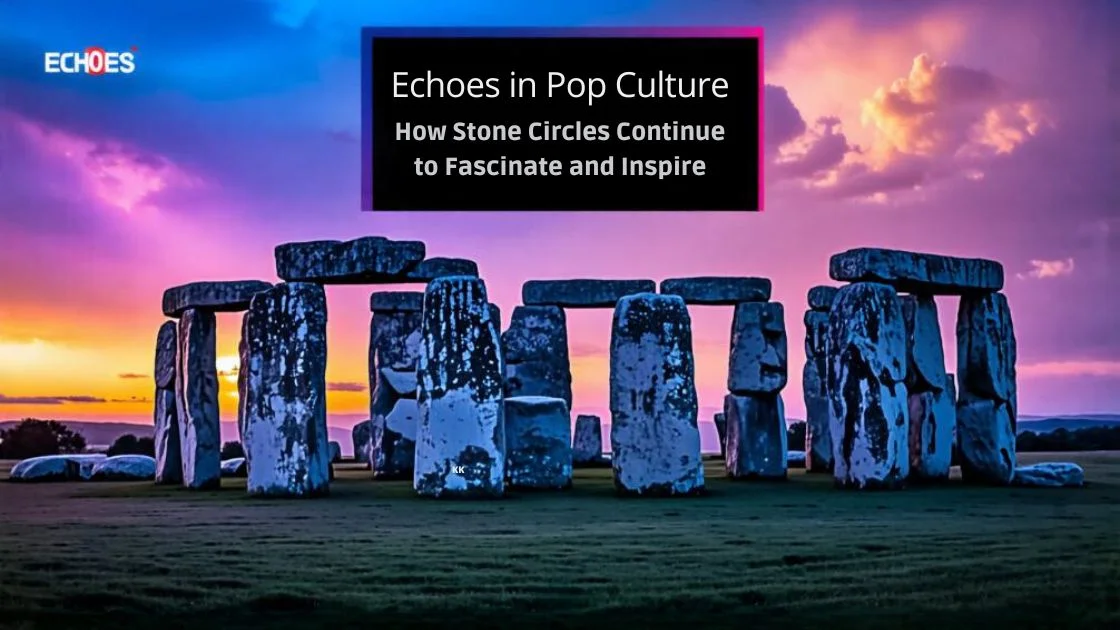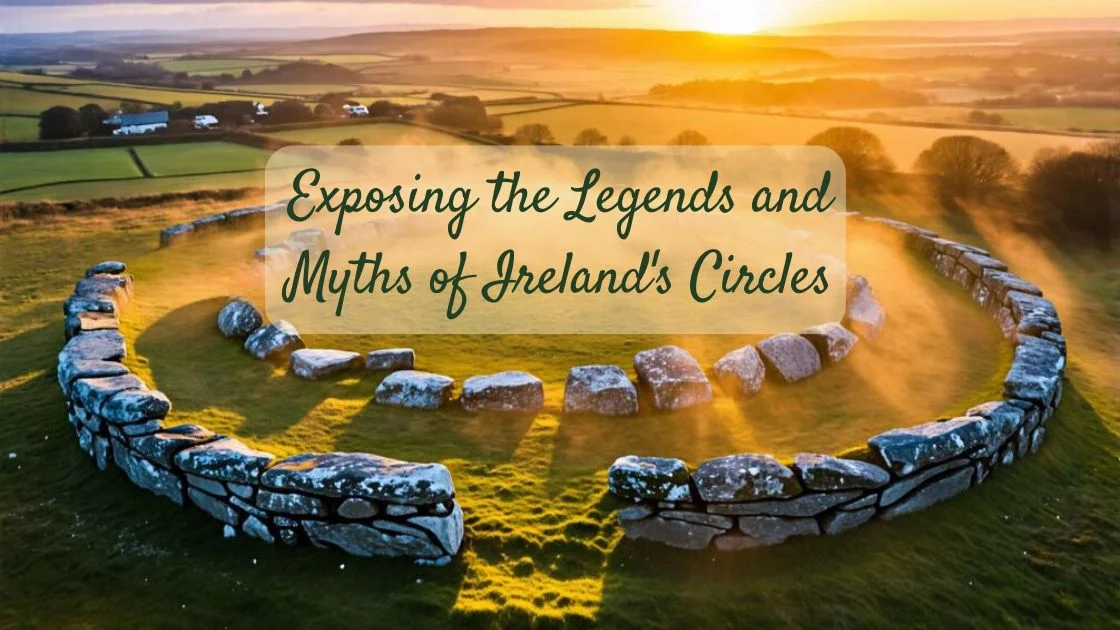You’re on a quest to unravel the mastery behind ancient stone circles.
As you delve into the architects’ world, you’ll discover their ingenious techniques and the deep cultural significance these structures hold.
Analyze the detailed craftsmanship that reflects a yearning for freedom and connection to the cosmos.
Embrace the scholarly pursuit to decode a past where community and knowledge merged to create monumental legacies.
Get ready to be astounded by the sophistication of these prehistoric marvels.
Key Takeaways
- Stone circles were primarily found in Northwestern Europe, especially in Britain, Ireland, and Brittany, during the Late Neolithic and Early Bronze Age.
- The construction of stone circles required significant communal effort, indicating a high level of social organization and communal cooperation.
- Stone circles varied in design, including recumbent stone circles, axial stone circles, and concentric stone circles, each with their own unique features.
- Stone circles were often aligned with solar and lunar positions, suggesting a deep understanding of astronomy and their integration into cultural and religious practices.
Introduction: the mystery and allure of ancient stone circles
You’ve likely heard of the enigmatic stone circles that dot the landscapes of Northwestern Europe, with a notable concentration in Britain, Ireland, and Brittany. These megalithic wonders aren’t just scattered haphazardly; their distribution suggests a pattern of cultural significance and regional connectivity.
As you explore their history, you’ll find that each circle embodies an intricate narrative of communal effort, astronomical alignment, and ritualistic importance.
Briefly mention their widespread presence in Northwestern Europe, especially in Britain, Ireland, and Brittany
As you explore the rich landscapes of Northwestern Europe, you’ll encounter the enigmatic stone circles that punctuate the countryside of Britain, Ireland, and Brittany, remnants of a prehistoric era. These monolithic monuments, products of Neolithic ingenuity, are silent testaments to the complexities of ancient societies.
Their distribution suggests a widespread cultural phenomenon, with regional variations like the recumbent stone circles in Britain and Brittany and the axial types found in Ireland’s Cork and Kerry counties. The builders of these circles harnessed a sophisticated understanding of geology, physics, and astronomy, achieving alignments with celestial events. Such precision underscores a desire for harmony with the cosmos, reflecting a deep yearning for connection and comprehension in the face of nature’s grandeur and mystery.
The Historical Context of Stone Circles
You’ll find that stone circles emerged primarily in the Late Neolithic and Early Bronze Age, around 3000 BC, marking a significant period in prehistoric architecture.
Their widespread presence across Northwestern Europe, particularly in Britain, Ireland, and Brittany, reflects a remarkable uniformity in megalithic construction despite vast geographical distances.
This distribution suggests not only a shared cultural or religious practice but also hints at the complexity of prehistoric communication and the transfer of knowledge across early European societies.
Discuss the origins of stone circles in the Late Neolithic and Early Bronze Age (around 3000 BC)
Discover how ancient communities embarked on the monumental task of creating stone circles during the Late Neolithic and Early Bronze Age, around 3000 BC, showcasing their sophisticated social organization and technical skills. Neolithic societies, with their emerging cultural complexity, orchestrated the construction of these enigmatic structures, each stone a testament to their ingenuity and pursuit of communal expression. You’ll find that these circles were not merely random placements; each was a carefully crafted symbol of unity and knowledge.
| Aspect | Detail |
|---|---|
| Communal Cooperation | Evidence of specialized roles and group planning. |
| Technical Mastery | Transport and precise placement of megaliths. |
| Cultural Significance | Ritual and ceremonial use implied by site context. |
| Astronomical Alignment | Solstice and equinox alignments suggest deep celestial understanding. |
In the tapestry of human history, these stone circles stand as profound markers of freedom – the liberty to innovate, to worship, and to connect across generations.
Highlight their geographical distribution across Europe
Many stone circles dot the landscape across Europe, each bearing witness to the shared architectural wisdom of ancient societies. You’ll find them sprinkled throughout the British Isles—like Stonehenge and Avebury—stretching over to the Carnac stone circles in Brittany, and across the water to Ireland’s Newgrange stone circle. These monuments reveal a geographical distribution that underscores not just a regional, but a pan-European phenomenon.
- Stonehenge: A preeminent example in England
- Avebury: Containing the largest stone circle in Europe
- Carnac: Site of dense alignments in Brittany
- Newgrange: Noted for its winter solstice alignment in Ireland
This distribution signifies a cultural tapestry, woven with threads of ritual, astronomy, and communal enterprise, reflecting societies that valued freedom in both thought and expression.
Community Effort in Construction
You must recognize the communal nature of constructing stone circles, where the collective action of planning, quarrying, and transportation was essential.
Such monumental tasks necessitated a sophisticated level of social organization and cooperation, indicating structured leadership and a division of labor within these ancient societies.
This collaborative endeavor underscores the capability of prehistoric communities to mobilize and work together towards a common architectural feat.
Explain the communal nature of stone circle construction, involving planning, quarrying, and transportation
Building a stone circle was a collaborative endeavor that required your ancestors to meticulously plan, expertly quarry, and collectively transport massive stones across challenging landscapes. It was a testament to prehistoric ingenuity, where every member of the community likely played a role. Consider the following critical aspects:
- Detailed planning to determine the circle’s design and astronomical alignments.
- Expert quarrying techniques to extract stones without damaging them.
- Ingenious methods to move heavy monoliths, possibly using logs and ropes.
- Coordinated efforts to position each stone with precision.
- Rituals and celebrations that may have accompanied each phase of construction.
These elements underscore a society highly skilled in managing complex projects, suggesting that your forebears valued and achieved a remarkable degree of freedom through collective action.
Emphasize the social organization and cooperation required for such monumental tasks
Every one of your ancestors’ stone circles stands as a testament to the remarkable social coordination and teamwork they mastered in their communal construction efforts. The creation of these megalithic structures wasn’t just a feat of physical labor; it required advanced social organization and cooperation.
To appreciate this, consider the various roles and responsibilities that had to be synchronized:
| Task | Role |
|---|---|
| Planning | Architects & Elders |
| Quarrying | Skilled Laborers |
| Transportation | Animal Handlers & Cartwrights |
| Laying Foundations | Masons & Surveyors |
| Construction | General Workforce |
Each column in the society’s hierarchy had to communicate effectively and work towards a common goal, showcasing a sophisticated network of interdependent tasks. This organizational prowess was essential for the successful completion of these enduring monuments, symbols of collective identity and achievement.
Variants in Stone Circle Design
You’ll find that stone circles aren’t a monolithic phenomenon but rather exhibit a variety of designs, each with its own set of features and potential functions.
Recumbent stone circles, for instance, are characterized by a singular large stone laid on its side, often accompanied by a gradation in height among the surrounding stones.
In contrast, axial stone circles introduce ‘portal’ stones, and concentric stone circles present a more complex arrangement with multiple rings, frequently associated with mortuary rituals.
Recumbent Stone Circles: Describe their unique feature of a large stone placed on its side and the gradation in stone height
Among the various types of stone circles, recumbent stone circles are distinguished by a singular large stone laid on its side, with the surrounding stones often decreasing in height from this central feature. This architectural choice isn’t merely aesthetic; it reflects a sophisticated understanding of design and possibly, celestial alignments. The recumbent stone circles exhibit a gradation in height, which may have been symbolic or functional.
Consider these attributes of recumbent stone circles:
- Orientation towards specific celestial events
- Use of local stone, indicating resourcefulness
- Possible acoustic properties due to stone arrangement
- Gradual height reduction enhancing the visual impact
- The recumbent stone acting as a focal point in ceremonies
These characteristics underscore the builders’ ingenuity and the importance of recumbent stone circles in their cultural context.
Axial Stone Circles: Focus on the distinctive ‘portal’ stones found in Irish stone circles
While you’ve explored the recumbent stone circles with their strategically placed large stones, let’s turn our attention to another remarkable variant: the axial stone circles of Ireland, characterized by their imposing ‘portal’ stones.
These Irish stone circles often feature a pair of tall, slender stones situated across from a recumbent stone, creating an entrance or ‘portal’. The precise positioning of the portal stones isn’t arbitrary; it indicates an advanced understanding of geometry and landscape.
This architectural choice may have served a symbolic or functional purpose, potentially related to the rituals enacted within these sacred spaces. The axial stone circles thus reflect a complex society that valued both the aesthetic impact and ceremonial significance of their constructions, underscoring a desire for spatial freedom in their ritual practices.
Concentric Stone Circles: Discuss these complex structures with multiple stone circles set within each other, often linked to funerary practices
How do concentric stone circles, with their intricate layers of construction often linked to ancient funerary rites, compare to the axial and recumbent types previously discussed? The concentric circles’ complexity suggests an evolved ritualistic significance, potentially serving multiple ceremonial functions. They aren’t merely points of alignment but spaces of transition, embodying the journey from life to death.
Consider these aspects of their design and purpose:
- Multiple stone rings signify layered dimensions of the afterlife.
- Central cobbles may symbolize the physical resting place within the spiritual realm.
- The circles’ concentric nature reflects a community’s structured view of the cosmos.
- Such structures likely served as focal points for elaborate ancestral veneration.
- They demand a recognition of sophisticated engineering and social coordination.
Concentric stone circles thus represent pinnacle achievements in megalithic architecture, integrating death, cosmos, and community.
Astronomical Alignments and Significance
As you examine the orientations of stone circles, you’ll uncover evidence that many were precisely aligned with celestial events, revealing the builders’ intricate knowledge of astronomy.
These alignments likely held profound cultural and ritual significance, integrating cosmological cycles into the social and spiritual fabric of these communities.
It’s essential to consider both the technical aspects of construction and the intended experiential impact these alignments had on ancient ceremonies and gatherings.
Explore how some stone circles align with solar and lunar positions, indicating an advanced understanding of astronomy
Many ancient stone circles you’ll encounter were precisely aligned with celestial bodies, showcasing the builders’ sophisticated knowledge of astronomy. These astronomical alignments weren’t mere coincidences but deliberate constructions that reflect an advanced understanding of celestial movements. Consider the following key points:
- Solstice Alignments: Some stone circles align with the extreme positions of the sun at solstices.
- Lunar Standstills: Certain circles correspond to the moon’s most northerly and southerly rising and setting points.
- Ecliptic Markers: Stones may have served as early markers to predict eclipses based on the lunar orbit.
- Seasonal Indicators: Alignments often denoted changing seasons, critical for agricultural societies.
- Navigational Aids: Knowledge of stars’ fixed positions likely aided in navigation and timekeeping.
This understanding empowered them with the ability to harmonize their lives with the cosmos, celebrating freedom in sync with the universe’s natural order.
Discuss the potential cultural and ritual significance of these alignments
You’ll find that the astronomical precision of stone circles isn’t just a testament to ancient ingenuity; it’s deeply woven into the cultural and ritual fabric of these societies.
These alignments suggest that astronomical observations played a significant role in the spiritual and ceremonial practices of the time. Stone circles, aligned with solstices and equinoxes, likely served as grand calendars, marking the passage of seasons and facilitating agricultural planning.
Moreover, the alignments could have held profound symbolic meanings, embodying the connection between the cosmos and the community’s well-being. Such precision in aligning these structures with celestial events underscores the importance of celestial bodies in ritual symbolism, potentially offering a structured cosmos amidst the freedom of untamed nature.
The Cultural and Ritual Role of Stone Circles
You’ll find that stone circles, devoid of residential indicators, primarily served as ceremonial spaces, distinct from the everyday living areas of ancient communities.
These megalithic structures often coexist with burial pits or chambers, suggesting their use in funerary rites or as monuments to the deceased.
Their construction away from dwellings underscores a deliberate separation of sacred space from the profane, reflecting a sophisticated cultural practice of spatial organization.
Delve into the evidence suggesting that stone circles were ceremonial or ritual sites rather than dwellings
As you explore the ancient stone circles scattered across the landscape, consider that their lack of domestic remains points to a purpose far beyond mere habitation. The arrangement and location of these megaliths imply a profound connection to ritualistic practices, as they’re often strategically placed to align with celestial events.
Consider these points:
- Stone circles lack evidence of roofs or enclosures, typical of residential structures.
- Many are built with astronomical precision, aligning with solstices and equinoxes.
- Artifacts found on sites are ceremonial in nature, not domestic.
- The circles’ designs and patterns often symbolize spiritual beliefs.
- They sometimes encompass burials or cremations, hinting at a sacred role.
This evidence collectively reinforces the likelihood that stone circles served as ceremonial or ritual sites.
Mention the association of some circles with burial pits or chambers
In exploring the ancient stone circles, you’ll often find that they’re connected with burial pits or chambers, hinting at their use in death rites and ancestral veneration. These megalithic monuments serve as silent custodians of the past, revealing a sophisticated approach to funerary practices.
Concentric stone circles, in particular, are frequently associated with interments, suggesting that the deceased were granted a place within the sanctified ground for their journey into the afterlife. The meticulous placement of these structures in relation to the celestial bodies underscores their import in the cosmological framework of the community.
The Spread of Stone Circle Construction Techniques
You’ll observe that the proliferation of stone circle construction methods appears intrinsically linked to the maritime networks emanating from northwestern France.
These sea routes not only facilitated the exchange of commodities but also served as conduits for the transmission of intricate architectural knowledge.
This diffusion of building practices reveals the sophisticated level of interconnectivity among ancient European communities.
Discuss how construction techniques likely spread via sea routes from northwestern France across Europe
Consider how the skills for crafting stone circles likely traveled across the waters from northwestern France to different parts of Europe, as ancient mariners shared their knowledge. This exchange of prehistoric technology was pivotal in shaping the cultural heritage of the continent.
- Navigational prowess facilitated the spread of construction methods.
- Coastal communities often engaged in reciprocal learning.
- Maritime trade routes became conduits for architectural ideas.
- Shared rituals and beliefs likely underpinned the transmission of knowledge.
- Linguistic evidence hints at cross-cultural communication.
These bullet points underscore the significance of sea travel in disseminating the intricate know-how required to construct megalithic stone circles.
It’s a testament to the freedom of movement and exchange that characterized the European Neolithic and Bronze Age periods.
Highlight the interconnectedness of ancient European communities and the sharing of architectural knowledge
Ancient mariners’ mastery allowed for the transfer of stone circle construction techniques, reflecting the deep interconnectedness within European communities. Their navigational prowess didn’t just bridge lands; it bridged cultures and knowledge systems, enabling the widespread dissemination of these sophisticated building methods.
The meticulous crafting of stone circles, from the selection and shaping of rocks to their astronomically-aligned placements, showcases a shared intellectual heritage. Maritime routes became the conduits through which this architectural wisdom flowed, knitting together disparate groups with a common thread of innovation.
Such evidence of cultural diffusion testifies to a remarkable level of cooperation and communication, as stone circle construction techniques became a shared language among the ancient builders of Europe, fostering a sense of community and continuity across vast distances.
Conclusion
You must recognize the remarkable skill and creativity of the ancient architects whose work has withstood millennia, leaving us the stone circles as a testament to their capabilities.
As you conclude your exploration, consider the persistent allure of these monuments and their critical role in deciphering the complexities of ancient societies.
Their construction not only reflects a mastery of technique but also offers insight into the cultural and astronomical knowledge of the time.
Reflect on the ingenuity and skill of ancient architects in creating these enduring and enigmatic structures
Every one of these stone circles stands as a testament to the remarkable ingenuity and meticulous skill of the architects of antiquity. The timelessness of these structures is a direct result of the sophisticated megalithic engineering techniques they employed.
Consider these highlights:
- Precise positioning of gargantuan stones, requiring keen spatial awareness.
- Advanced understanding of geological sourcing for durable materials.
- Ingenious transportation methods across difficult terrains.
- Deliberate alignments with celestial bodies, evidencing astronomical proficiency.
- Creation of spaces that served multifaceted communal functions.
In delving into the fabric of these ancient constructions, you come to appreciate the freedom these architects must have possessed: the liberty to innovate, to connect with the cosmos, and to leave an indelible mark on the annals of human achievement.
Conclude with thoughts on the continuing fascination with stone circles and their significance in understanding ancient civilizations
These structures not only showcase the technical prowess of their creators but also continue to captivate scholars and laypeople alike, offering invaluable insights into the sophisticated cultures of our ancestors.
The enduring fascination with stone circles extends beyond their monumental presence; they’re touchstones to ancient mysteries, beckoning us to unravel the intentions and intellect of prehistoric societies.
The precision of their alignments with celestial events underscores a freedom of thought and belief, harmoniously intertwined with empirical observation.
As you ponder their purpose and significance, consider the remarkable fact that these circles remain a testament to the communal dedication and astronomical acumen that predated written history.
Their significance in understanding ancient civilizations is profound, bridging millennia to illuminate the collective endeavors of humanity’s early architects.
Conclusion
In conclusion, you’ve journeyed through the ancient landscapes, unraveling the complex tapestry of stone circle creation.
These monuments, products of communal endeavor and astronomical precision, not only showcase our ancestors’ ingenuity but also speak volumes about their cultural identity.
The diffusion of these construction methods across regions underscores a shared human legacy, one where ingenuity and spirituality intertwine, leaving an indelible mark on the annals of prehistoric craftsmanship that continues to captivate scholars and laymen alike.



